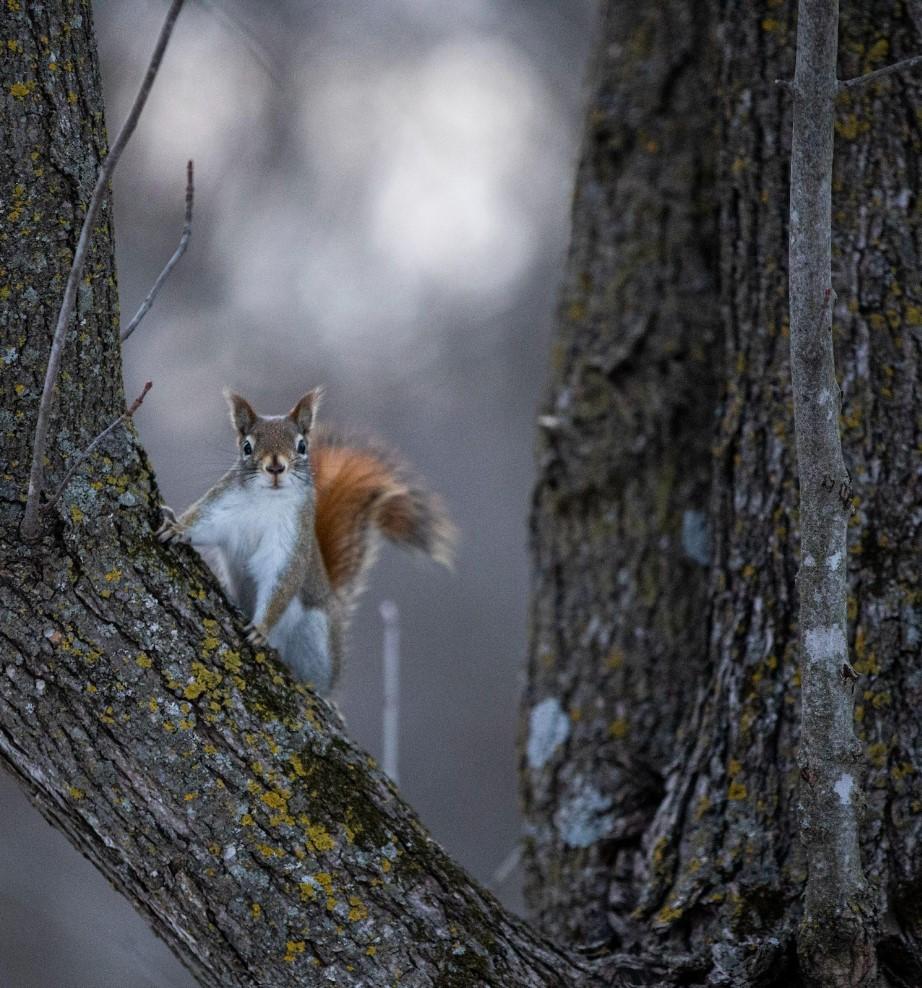Arb notes: The spring and squirrels
With what may be the last of the snow, southern Minnesota has seen a flurry of activity amongst its many feathered and furry creatures. Hibernators have risen from their dens and nests; migrators touch down on the glassy surface of the Lyman Lakes. The squirrels in the area have been active all winter, but now they have multiplied. With their winter caches drained, squirrels dart about looking for high-energy buds to consume. This spring, watch out for the following young and mature squirrels of different species.
Gray (and sometimes white) squirrels (Sciurus carolinensis) live everywhere on Carleton’s campus. They are smaller than the campus’ more shy fox squirrels (Sciurus niger), whose bodies can be over a foot long. While the gray squirrel sports a cream-colored belly, fox squirrels have one of bright orange. Both the gray and fox squirrels have just finished the first of their two annual mating seasons.
Red squirrels (Tamiasciurus hudsonicus) weigh less than half of a gray squirrel, but they make a big presence on campus. These rodents have warm red-brown fur and tufted ears throughout winter and early spring. They are quite territorial and chatter to ward off intruders from their space. Red squirrels only mate once a season, doing so in late winter. Their young, independent after around 12 weeks, begin life weighing less than an ounce (see: dnr.state.minnesota.us for more information).
And last, we have the Southern flying squirrel (Glaucomys volans). These little creatures live in every cardinal direction of Carleton and would find suitable forested habitat in the Arb. However, none have ever been spotted in these woods. Keep an eye out for their glides (up to 150 feet!) in the trees at night.
—Amelia Leonard ‘24, for the Cole Student Naturalists












